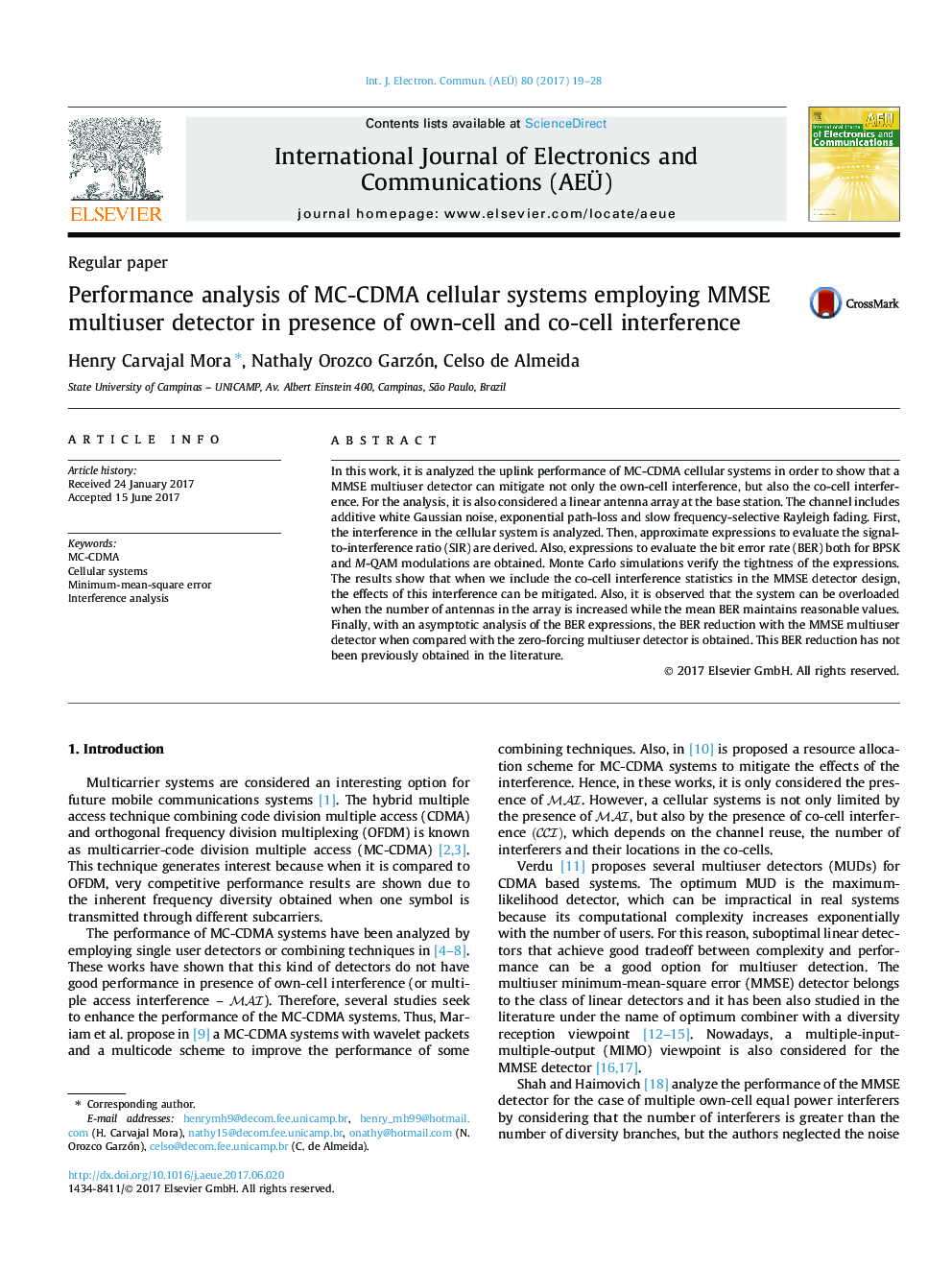| Article ID | Journal | Published Year | Pages | File Type |
|---|---|---|---|---|
| 4953837 | AEU - International Journal of Electronics and Communications | 2017 | 10 Pages |
Abstract
In this work, it is analyzed the uplink performance of MC-CDMA cellular systems in order to show that a MMSE multiuser detector can mitigate not only the own-cell interference, but also the co-cell interference. For the analysis, it is also considered a linear antenna array at the base station. The channel includes additive white Gaussian noise, exponential path-loss and slow frequency-selective Rayleigh fading. First, the interference in the cellular system is analyzed. Then, approximate expressions to evaluate the signal-to-interference ratio (SIR) are derived. Also, expressions to evaluate the bit error rate (BER) both for BPSK and M-QAM modulations are obtained. Monte Carlo simulations verify the tightness of the expressions. The results show that when we include the co-cell interference statistics in the MMSE detector design, the effects of this interference can be mitigated. Also, it is observed that the system can be overloaded when the number of antennas in the array is increased while the mean BER maintains reasonable values. Finally, with an asymptotic analysis of the BER expressions, the BER reduction with the MMSE multiuser detector when compared with the zero-forcing multiuser detector is obtained. This BER reduction has not been previously obtained in the literature.
Related Topics
Physical Sciences and Engineering
Computer Science
Computer Networks and Communications
Authors
Henry Carvajal Mora, Nathaly Orozco Garzón, Celso de Almeida,
